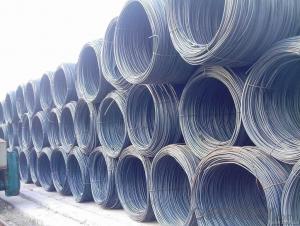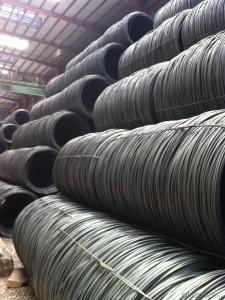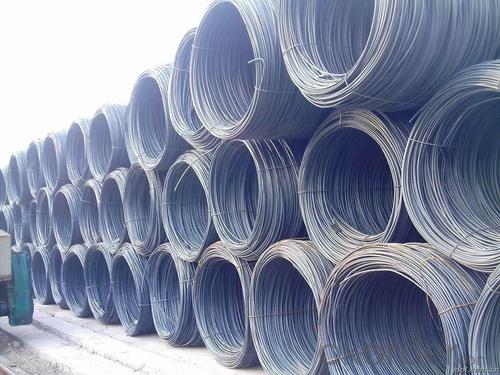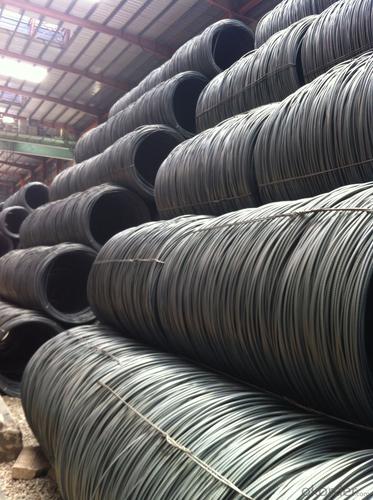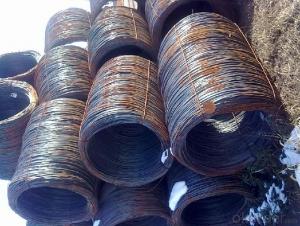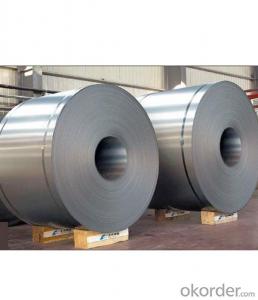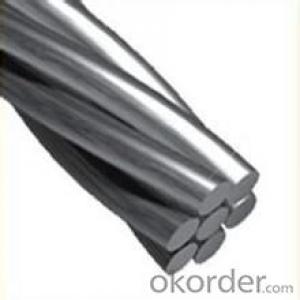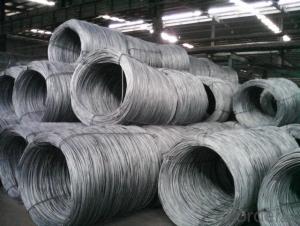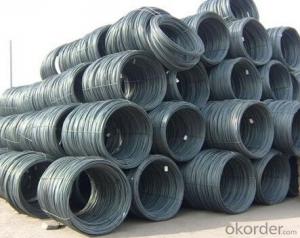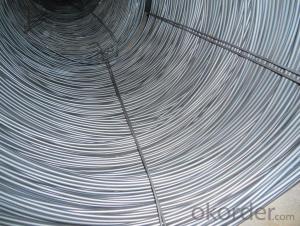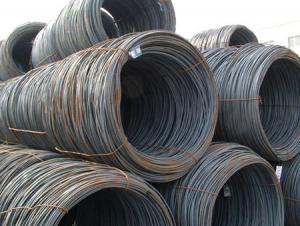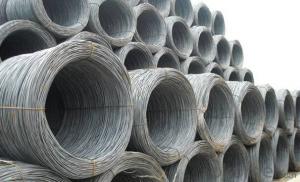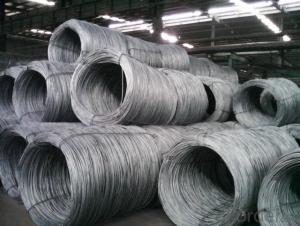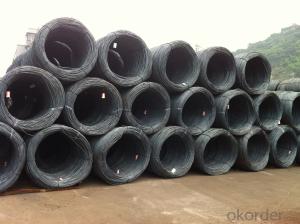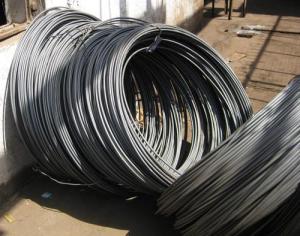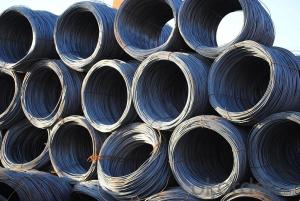Steel Wire Rods in Grade ASTM SAE1006-1018
- Loading Port:
- Tianjin
- Payment Terms:
- TT OR LC
- Min Order Qty:
- 25 m.t
- Supply Capability:
- 10000 m.t/month
OKorder Service Pledge
OKorder Financial Service
You Might Also Like
OKorder is offering wire rods at great prices with worldwide shipping. Our supplier is a world-class manufacturer of steel, with our products utilized the world over. OKorder annually supplies products to European, North American and Asian markets. We provide quotations within 24 hours of receiving an inquiry and guarantee competitive prices.
Product Applications:
After hot-rolled the products shaped into coil and delivery as finished product, including round, square,rectangular, hexagonal and so on. Since most of the products are round, it is generally called wire rod. Carbon steel wire rod is widely used in construction and manufacturing. Carbon steel wire rod is mainly used for reinforcement of reinforced concrete and welded structure or reprocessed (roberts , nail, etc.) materials, especially used to produce wire drawing, welding electrode, nails, spring, electronic, precise machinery parts and so on.
Product Advantages:
OKorder's Wire rods are durable, strong, and resist corrosion.
Main Product Features:
· Premium quality
· Prompt delivery & seaworthy packing (30 days after receiving deposit)
· Corrosion resistance
· Can be recycled and reused
· Mill test certification
· Professional Service
· Competitive pricing
Product Specifications:
Manufacture: Hot rolled
Grade: SAE1006-SAE1018
Certificates: ISO, SGS, BV, CIQ
Packaging: Export packing, nude packing, in coils
Grade | Chemical Composition (%) | |||||
C | Mn | S | P | Si | B | |
SAE1008B | 0.10max | 0.32max | 0.045max | 0.040max | 0.30max | 0.0008min |
Mechanical properties | ||||||
Yield strength(N/mm2) | Tensile strength(N/mm2) | Elongation (%) | ||||
≥195 | 350-380 | ≥32 | ||||
FAQ:
Q1: Why buy Materials & Equipment from OKorder.com?
A1: All products offered byOKorder.com are carefully selected from China's most reliable manufacturing enterprises. Through its ISO certifications, OKorder.com adheres to the highest standards and a commitment to supply chain safety and customer satisfaction.
Q2: How do we guarantee the quality of our products?
A2: We have established an advanced quality management system which conducts strict quality tests at every step, from raw materials to the final product. At the same time, we provide extensive follow-up service assurances as required.
Q3: The products are invoicing on theoritical weight or on actual weight?
A3: Usually, on actual weight.
Q4: How soon can we receive the product after purchase?
A4: Within three days of placing an order, we will begin production. The specific shipping date is dependent upon international and government factors, but is typically 7 to 10 workdays.
Images:
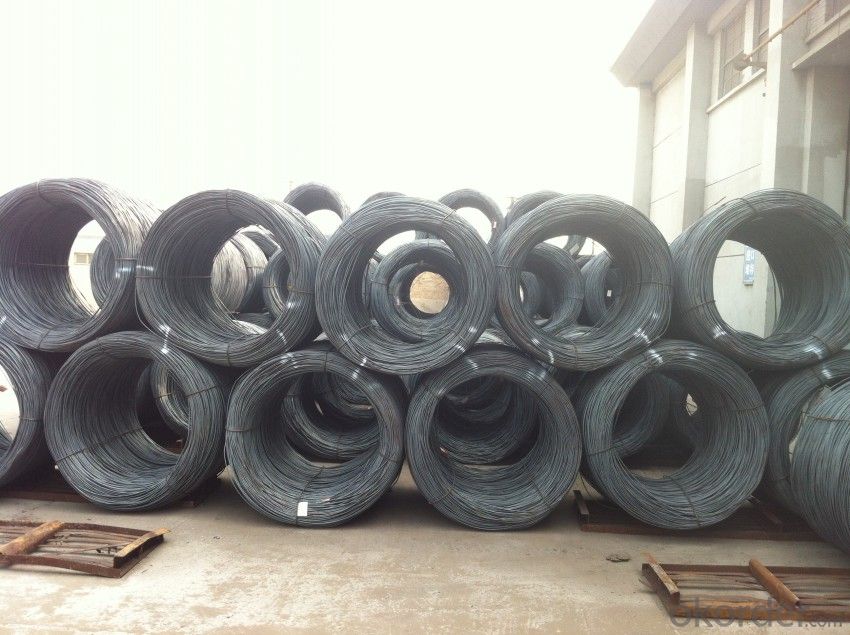
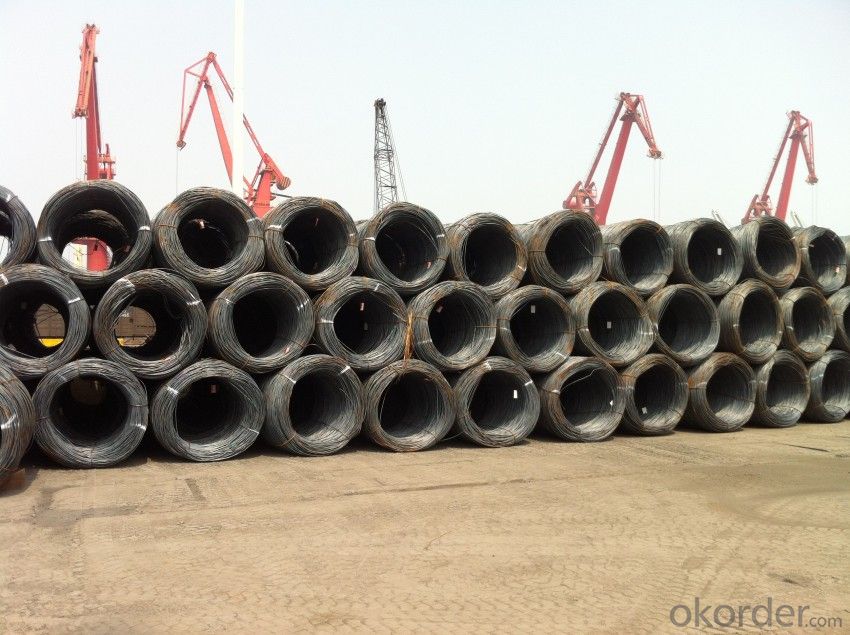
- Q: What are the applications of steel wire rod?
- Steel wire rods have a wide range of applications in various industries. They are commonly used in manufacturing processes such as wire drawing, welding electrodes, reinforcement in concrete structures, and as raw material for the production of various steel products such as nails, screws, springs, and cables. Additionally, steel wire rods find applications in the automotive industry for the production of engine components, suspension systems, and wire harnesses. Their high strength, durability, and versatility make them essential in numerous construction, manufacturing, and engineering applications.
- Q: What are the main factors influencing the choice of steel wire rod technical support?
- The main factors influencing the choice of steel wire rod technical support can vary depending on the specific needs and requirements of the industry or company. However, there are several common factors that play a significant role in this decision-making process. One of the key factors is the technical expertise and knowledge of the support provider. The chosen technical support team should have a deep understanding of steel wire rod production processes, equipment, and technologies. They should have the necessary experience and expertise to provide guidance and solutions for any technical challenges that may arise during production. Another important factor is the reliability and responsiveness of the technical support team. Steel wire rod production processes can be time-sensitive, and any technical issues or breakdowns can lead to costly production delays. Therefore, having a responsive technical support team that can quickly address and resolve any issues is crucial for ensuring smooth and uninterrupted production. The availability of comprehensive technical support services is also a significant factor. This includes not only troubleshooting and resolving technical issues but also providing guidance and assistance in areas such as process optimization, equipment maintenance, and quality control. A comprehensive technical support provider can offer a holistic approach to enhancing the overall efficiency and productivity of the steel wire rod production process. Cost is another important consideration. Companies need to evaluate the cost-effectiveness of the technical support services offered. This involves considering factors such as the upfront cost of the support, ongoing maintenance expenses, and the potential cost savings or productivity improvements that can be achieved through the use of the support services. Furthermore, the reputation and track record of the technical support provider are essential factors to consider. It is crucial to choose a provider with a proven track record of delivering high-quality technical support services to ensure reliability and effectiveness. Lastly, the compatibility and integration of the technical support services with the existing infrastructure and systems should be evaluated. The chosen support provider should be able to seamlessly integrate their services into the existing production processes and systems, minimizing disruptions and maximizing efficiency. In conclusion, the main factors influencing the choice of steel wire rod technical support include technical expertise, reliability and responsiveness, comprehensive services, cost-effectiveness, reputation, and compatibility. Considering these factors will help companies make an informed decision that meets their specific needs and requirements.
- Q: What are the common industry workshops for steel wire rod?
- Some common industry workshops for steel wire rod include wire drawing workshops, heat treatment workshops, and surface treatment workshops.
- Q: How is steel wire rod used in the manufacturing of screws and bolts?
- Steel wire rod is used in the manufacturing of screws and bolts as it serves as the primary raw material. The wire rod is first drawn into the desired diameter and then cut into specific lengths to create the base material for screws and bolts. This wire is then further processed through various manufacturing processes, including heading, threading, and heat treatment, to shape and strengthen it into the final product. So, steel wire rod is an essential component that provides the necessary strength and durability to screws and bolts.
- Q: How is steel wire rod used in the production of suspension springs for aircraft?
- Steel wire rod is commonly used in the production of suspension springs for aircraft due to its high strength and durability. The wire rod is first drawn to the desired diameter and then coiled to form the spring. The coiled wire rod is then heat-treated to improve its mechanical properties, such as resilience and fatigue resistance. These suspension springs play a vital role in absorbing shocks and vibrations during flight, ensuring a smooth and stable ride for the aircraft.
- Q: How is steel wire rod used in the manufacturing of electrical cables?
- Steel wire rod is commonly used in the manufacturing of electrical cables due to its excellent strength and conductivity properties. The wire rod is typically drawn through a series of dies to reduce its diameter and increase its length. This process, known as wire drawing, results in a fine, high-quality wire that can be used as a conductor in electrical cables. The steel wire rod serves as the core conductor of the cable, providing a path for the electrical current to flow. Its high conductivity ensures minimal power loss during transmission, making it an ideal choice for electrical applications. Additionally, the strength of steel wire rod allows for the cable to withstand mechanical stress and strain, ensuring its durability and longevity. In the manufacturing process, the steel wire rod is often coated with a layer of insulation material, such as PVC or polyethylene, to provide electrical insulation and protect against moisture and other environmental factors. This insulation layer prevents short circuits and ensures the safe and efficient transmission of electricity. Furthermore, steel wire rod is also used in the armor layer of certain types of electrical cables. By wrapping the wire rod around the core conductor, it provides additional mechanical protection to the cable, making it more resistant to bending, crushing, and external impacts. Overall, steel wire rod plays a crucial role in the manufacturing of electrical cables by providing a strong and conductive core conductor. Its use ensures the safe and reliable transmission of electricity while maintaining the structural integrity of the cable.
- Q: What are the common applications of spring steel wire rod?
- Spring steel wire rods have a wide range of applications due to their unique properties. Some common uses include manufacturing springs, wire forms, clips, fasteners, and mechanical components such as shafts and pins. They are also used in the automotive industry for suspension systems, seat frames, and engine components. Additionally, spring steel wire rods are utilized in the construction industry for reinforcing concrete, as well as in the manufacturing of various tools and equipment.
- Q: How is steel wire rod used in the production of wire displays?
- Steel wire rod is used in the production of wire displays as it serves as the foundation material for creating the wire frames and structures that make up the displays. The wire rod is first processed and shaped into the desired dimensions and then formed into different shapes and configurations to create the structures that hold and showcase products in wire displays.
- Q: What are the main regions for steel wire rod production?
- The main regions for steel wire rod production include Asia, particularly China, Japan, and South Korea, North America, specifically the United States, and Europe, with countries like Germany, Italy, and France being major producers.
- Q: How is steel wire rod used in the manufacturing of wire rope rings?
- Steel wire rod is used as the primary raw material in the manufacturing of wire rope rings. It is first drawn into a wire of the required diameter and then twisted into strands. These strands are then helically wrapped around a core to form a wire rope, which is subsequently shaped into rings. The high strength and durability of steel wire rod make it an ideal material for wire rope rings, providing them with the necessary load-bearing capacity and resistance to wear and tear.
Send your message to us
Steel Wire Rods in Grade ASTM SAE1006-1018
- Loading Port:
- Tianjin
- Payment Terms:
- TT OR LC
- Min Order Qty:
- 25 m.t
- Supply Capability:
- 10000 m.t/month
OKorder Service Pledge
OKorder Financial Service
Similar products
Hot products
Hot Searches
Related keywords
